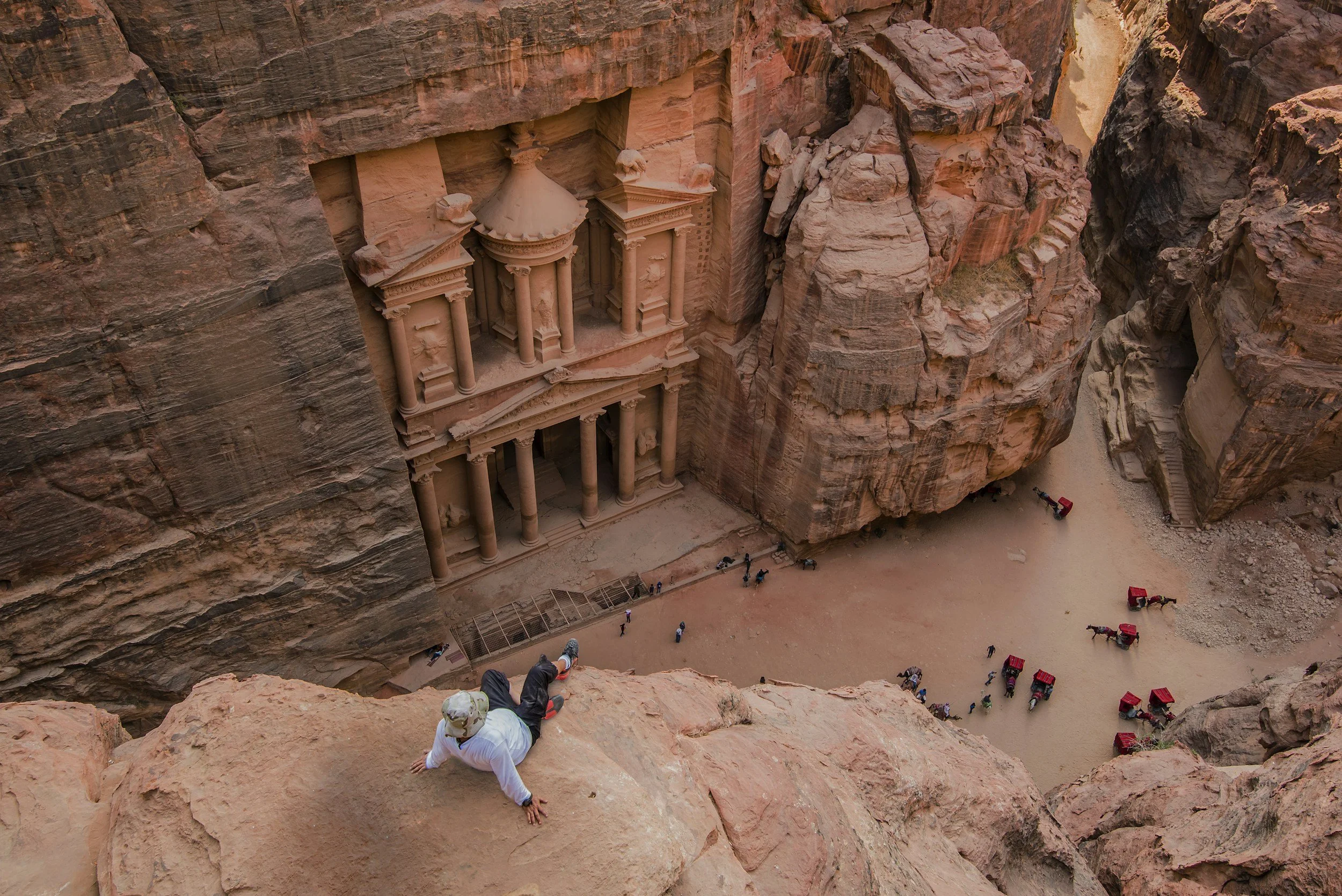Revealing the Mystique of Petra: Jordan’s Ancient Wonder
Hidden within the rugged mountains of southern Jordan lies Petra, an archaeological marvel and a testament to human ingenuity and resilience. Often referred to as the "Rose City" due to the hue of its stone, Petra is a UNESCO World Heritage site and one of the New Seven Wonders of the World. Here’s why a visit to Petra should be on every traveler’s bucket list.
Petra is more than just an archaeological site; it’s a journey through history, culture, and natural beauty. Its stunning architecture, fascinating history, and breathtaking landscapes make it a destination that captures the imagination and leaves a lasting impression. For travelers seeking an adventure that combines exploration with a deep sense of wonder, Petra is an unparalleled destination.
A Journey Through History in Petra
Petra was established as the capital of the Nabataean Kingdom in the 4th century BCE. This ancient civilization, renowned for its skills in water conservation and architecture, carved an entire city out of the pink sandstone cliffs. Walking through Petra is like stepping back in time, offering a glimpse into a civilization that thrived over two millennia ago.
The journey to Petra begins with the Siq, a narrow, winding gorge that serves as the entrance to the city. This 1.2-kilometer-long passageway is flanked by towering rock walls and sets the stage for the awe-inspiring sight that awaits at the end: the Treasury, or Al-Khazneh. This iconic facade, with its intricate carvings and grand columns, is Petra’s most famous monument and a symbol of the city’s grandeur.
Architectural Marvels in Petra
Beyond the Treasury, Petra unfolds into a vast landscape of tombs, temples, and ancient structures. The Street of Facades, lined with elaborate tombs and houses carved into the rock, showcases the Nabataeans' architectural prowess. The Royal Tombs, perched high on the cliffs, offer panoramic views of the city and reveal intricate designs that reflect a blend of Hellenistic and Nabataean styles.
The Monastery, or Al-Deir, is another highlight. This massive structure, similar in design to the Treasury but even larger, requires a steep hike of about 800 steps to reach. The effort is well worth it, as visitors are rewarded with a breathtaking view of the surrounding valleys and mountains.
Cultural + Historical Insights in Petra
Petra’s significance extends beyond its architectural beauty. The Petra Archaeological Museum and the Petra Nabataean Museum provide valuable insights into the history and culture of the Nabataeans. Exhibits include artifacts such as pottery, coins, and tools that offer a glimpse into daily life in ancient Petra.
The Bedouin people, who have lived in and around Petra for generations, add another layer of cultural richness. Visitors can learn about their traditions, music, and cuisine, often through guided tours and local hospitality. The Bedouins' deep connection to Petra and their efforts to preserve its heritage make them invaluable stewards of this ancient site.
Natural Beauty in Petra
Petra’s natural surroundings are as impressive as its man-made structures. The rugged landscape, characterized by towering cliffs and narrow canyons, creates a dramatic backdrop for the ancient city. Hiking trails, such as the Al-Khubtha trail, offer stunning vistas and a chance to explore lesser-known parts of Petra, including hidden tombs and rock carvings.
Evening Magic in Petra
One of the most enchanting ways to experience Petra is by night. The Petra by Night tour, held on select evenings, transforms the Siq and the Treasury into a magical wonderland illuminated by thousands of candles. As visitors walk through the candle-lit path, they are treated to traditional Bedouin music and storytelling, creating a mystical and unforgettable experience.
Practical Tips While Visiting Petra
To make the most of a visit to Petra, it’s advisable to start early in the morning to avoid the heat and crowds. Comfortable footwear is essential, as exploring Petra involves a significant amount of walking and hiking. Hiring a local guide can enhance the experience by providing historical context and guiding visitors to the best viewpoints and hidden gems.
SPONSORED CONTENT: Secrets of the rich that will make you wealthy overnight


